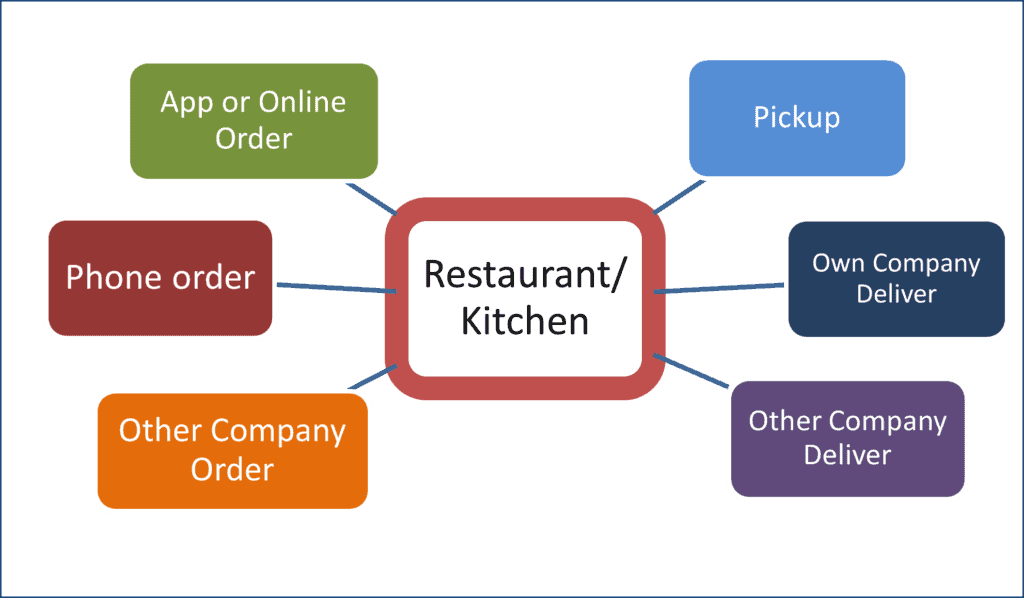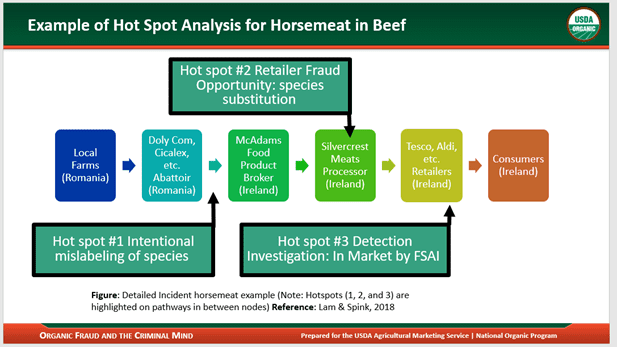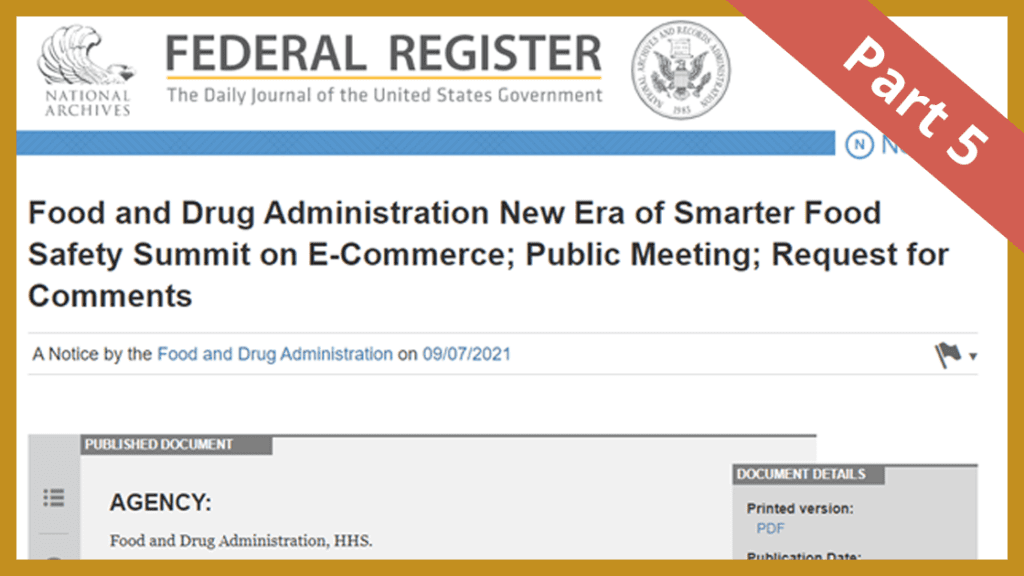How to start addressing food e-commerce risks? E-commerce is a food safety concern. FDA is asking about the risks. How to start? Start simple with a basic supply chain map and then conduct criminology hot spot analysis. The steps are outlined here with links to examples.
This is the fifth blog post in our multi-post series that focuses on the FDA “New Era of Smarter Food Safety” (SFS) blueprint. Other posts include a review of the FDA public meeting, an e-commerce and food fraud overview, a review of ISO cybersecurity definitions, a country-level vulnerability assessment, a video Lecture on Cybersecurity and the Food Safety Manager, and possibly others.
When assessing the risks, there are three parts to the review: (1) a list of incidents or concerns, (2) the process that is being reviewed, and (3) reviewing for system weaknesses. These three steps support the vulnerability or risk assessment that is then used by a prevention strategy to make decisions about countermeasures and control systems (For more detail, see Food Fraud Prevention, Spink, 2019.)
Scope
Remember, in support of the FDA public meeting on food e-commerce, the scope of this blog post is on food that is ordered electronically and delivered directly to consumers. The FDA scope is broadly defined, which is an important starting point – a broad starting point helps provide an expansive view that will hopefully include all the potential risks. The starting points are fundamental in an initial screening and can be refined as needed (for more, see Introducing the Food Fraud Initial Screening Model – FFIS).
List of Incidents and Concerns
The subject of another blog post will be the process and level of detail for creating a list of incidents and summary of concerns (for more, see The Current State of Food Fraud Prevention: ‘How to Start?’ and ‘How Much is Enough?’).
Supply Chain Mapping
While there are many formal systems and methods to help with supply chain mapping, at the root, this is basic process mapping. You are NOT making any judgments or conclusions. You are just trying to define all the process steps and how they are connected at this point in the process.
The scholarly discipline of Supply Chain Management comprises three integrated activities of sourcing, operations, and then logistics and distribution. Customer service is a link between the logistics of the producer and the sourcing of the user. The sourcing or procurement is ordering the product over an electronic channel, such as a phone call, through the company-managed app or online order platform, or through a third-party company. For the FDA food e-commerce public meeting, the “operations” are the restaurant or kitchen, including meal delivery kits. The operations would be the restaurant or commercial food kitchen that produces the food product. Then, the logistics would be how the food product is transferred to the consumer.
A simplified figure is included here. This is a good starting point that you can use to refine your process further. Do you have more than one kitchen operation? Do you have multiple “other company delivery” options”? Do you sell your product through another company’s website?

Criminology Hot Spot Analysis
The supply chain map above details how the product moves through the systems and identifies specific nodes and links. A node is a location, and a link is a transfer between two locations. The criminology theory of hot spot analysis is a systematic way to apply the list of incidents and concerns to specific places on the supply chain map and then assess the vulnerability at specific points or processes (see the figure below, and for more see USDA link to the course: https://www.ams.usda.gov/services/organic-certification/training).
An example of applying the criminology hot spot analysis is the USDA Organic Integrity Learning Center training course on Organic Product Fraud and the Criminal Mind (see course N-100 at https://www.ams.usda.gov/services/organic-certification/training). The training example considered a simplified supply chain map for the horsemeat in the beef incident. The food fraud incident was that horsemeat was illegally substituted for beef and then covertly sold into the market. The criminal activity was not a one-off, smash-and-grab event. It was a complex operation that required capital investment and a consistent presence in the marketplace. The fraudsters were continuously operating and repeating the fraud act during legitimate business operations. The hot spots were where the criminal action did occur or where there were other system weaknesses. The hot spot analysis also assesses where countermeasures or control systems could be applied for the optimal impact.
You will see “Hot Spot #2,” where the illegal act occurred, in the figure below. In reality, this was just one of a seemingly infinite number of places that the fraud occurs. This insight is critical because it suggested that controlling just this one hot spot would not be efficient or effective. Then, and most important for the FDA food e-commerce meeting, “Hot Spot #1” and “Hot Spot #3” were identified where the optimal countermeasures or control systems could be applied. These two spots were efficient for a response. They were places where almost all of the product flowed through a specific point. For example, the import customs organization could conduct species tests on the products that were crossing the hot spot of a national border facility. Also, a company could conduct a species test on products at the receiving dock in their facilities.
The horsemeat in beef food fraud act could be reviewed and assessed by applying supply chain mapping and criminology hot spot analysis. By combining these theories, the specific system weakness could be identified, and optimal countermeasures and control systems could be selected. Of course, the fraudster and the fraud act will continuously evolve, so the incidents, supply chain mapping, and hot spot analysis must be continuously updated.

In support of the FDA public meeting on food e-commerce, this post has included examples of applying supply chain mapping to understand the flow of products, and then criminology hot spot analysis to examine the significant concerns to identify the optimal countermeasures. This is a simple way for companies to start a review of their food e-commerce vulnerability and risk assessment.

